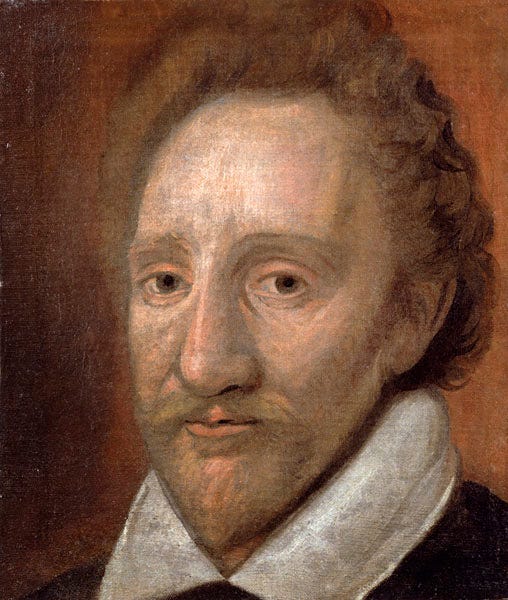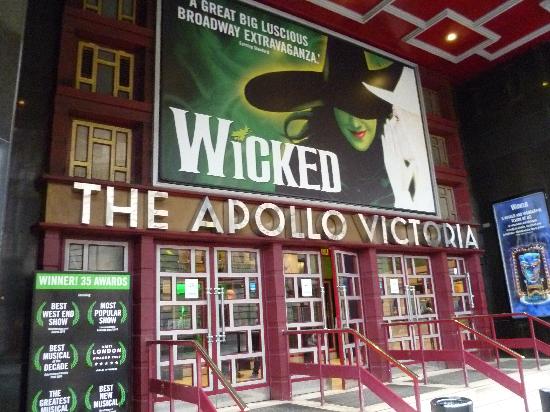West End Theatre, according to Wikipedia, "is a common term for mainstream professional theatre staged in the large theatres of "Theatreland" in and near the West End of London. Along with New York City's Broadway theatre, West End theatre is usually considered to represent the highest level of commercial theatre in the English-speaking world. Seeing a West End show is a common tourist activity in London.
In 2013, ticket sales reached a record 14.4 million, making West End theatre the largest English-speaking audience in the world. Famous screen actors, British and international alike, frequently appear on the London stage.

Theatre in London flourished after the English Reformation. The first permanent public playhouse, known simply as The Theatre, was constructed in 1576 in Shoreditch by James Burbage. It was soon joined by The Curtain. Both are known to have been used by William Shakespeare's company. In 1599, the timber from The Theatre was moved to Southwark, where it was used in building the Globe Theatre in a new theatre district formed beyond the controls of the City corporation. These theatres were closed in 1642 due to the Puritans who would later influence the interregnum of 1649.
 |
| James Burbage |
After the Restoration (1660), two companies were licensed to perform, the Duke's Company and the King's Company. Performances were held in converted buildings, such as Lisle's Tennis Court. The first West End theatre, known as Theatre Royal in Bridges Street, was designed by Thomas Killigrew and built on the site of the present Theatre Royal, Drury Lane. It opened on 7 May 1663 and was destroyed by a fire nine years later. It was replaced by a new structure designed by Christopher Wren and renamed the Theatre Royal, Drury Lane.

Outside the West End, Sadler's Wells Theatre opened in Islington on 3 June 1683. Taking its name from founder Richard Sadler and monastic springs that were discovered on the property, it operated as a "Musick House", with performances of opera; as it was not licensed for plays. In the West End, the Theatre Royal Haymarket opened on 29 December 1720 on a site slightly north of its current location, and the Royal Opera House opened in Covent Garden on 7 December 1732.

The Patent theatre companies retained their duopoly on drama well into the 19th century, and all other theatres could perform only musical entertainments. By the early 19th century, however, music hall entertainments became popular, and presenters found a loophole in the restrictions on non-patent theatres in the genre of melodrama. Melodrama did not break the Patent Acts, as it was accompanied by music. Initially, these entertainments were presented in large halls, attached to public houses, but purpose-built theatres began to appear in the East End at Shoreditch and Whitechapel.
| 1800 Century melodrama |
The West End theatre district became established with the opening of many small theatres and halls, including the Adelphi in The Strand on 17 November 1806. South of the River Thames, the Old Vic, Waterloo Road, opened on 11 May 1818. The expansion of the West End theatre district gained pace with the Theatres Act 1843, which relaxed the conditions for the performance of plays, and The Strand gained another venue when the Vaudeville opened on 16 April 1870. The next few decades saw the opening of many new theatres in the West End. The Criterion Theatre opened on Piccadilly Circus on 21 March 1874, and in 1881, two more houses appeared: the Savoy Theatre in The Strand, built by Richard D'Oyly Carte specifically to showcase the comic operas of Gilbert and Sullivan, opened on 10 October (the first theatre to be lit by cooler, cleaner electric lights), and five days later the Comedy Theatre opened as the Royal Comedy Theatre on Panton Street in Leicester Square. It abbreviated its name three years later.The theatre building boom continued until about World War I.

During the 1950s and 1960s, many plays were produced in theatre clubs, to evade the censorship then exercised by the Lord Chamberlain's Office. The Theatres Act 1968 finally abolished censorship of the stage in the United Kingdom.
"Theatreland", London's main theatre district, contains approximately forty venues and is located in and near the heart of the West End of London. It is traditionally defined by The Strand to the south, Oxford Street to the north, Regent Street to the west, and Kingsway to the east, but a few other nearby theatres are also considered "West End" despite being outside the area proper (e.g. The Apollo Victoria Theatre, in Westminster). Prominent theatre streets include Drury Lane, Shaftesbury Avenue, and The Strand. The works staged are predominantly musicals, classic and modern straight plays, and comedy performances.

Many theatres in the West End are of late Victorian or Edwardian construction and are privately owned. Many are architecturally impressive, and the largest and best maintained feature grand neo-classical, Romanesque, or Victorian façades and luxurious, detailed interior design and decoration.
However, owing to their age, leg room is often cramped, and audience facilities such as bars and toilets are often much smaller than in modern theatres. The protected status of the buildings and their confined urban locations, combined with financial constraints, make it very difficult to make substantial improvements to the level of comfort offered. In 2003, the Theatres Trust estimated that an investment of £250 million over the following 15 years was required for modernization and stated that 60% of theatres had seats from which the stage was not fully visible. The theatre owners unsuccessfully requested tax concessions to help them meet the costs.
From 2004 onwards there were several incidents of falling plasterwork or performances being cancelled because of urgent building repairs being required. These events culminated in the partial collapse of the ceiling of the Apollo Theatre in December 2013. Of these earlier incidents, only one led to people being hurt, but at the Apollo Theatre 76 people needed medical treatment for their injuries.
In 2012, gross sales of £529,787,692 were up 0.27% and attendances also increased 0.56% to 13,992,773-year-on-year. In 2013, sales again rose this time by 11% to £585,506,455, with attendances rising to 14,587,276. This was despite slightly fewer performances occurring in 2013.



Inga kommentarer:
Skicka en kommentar